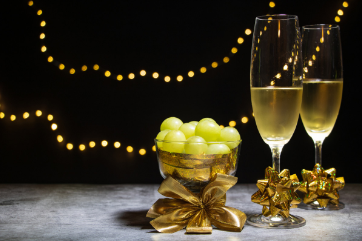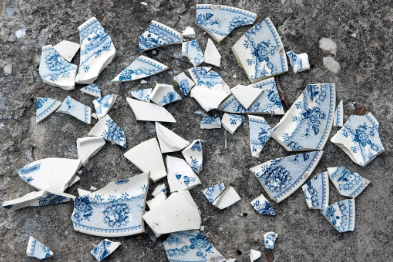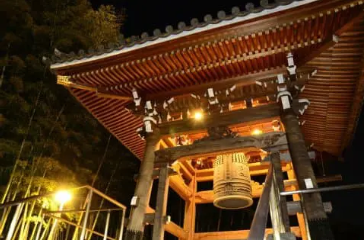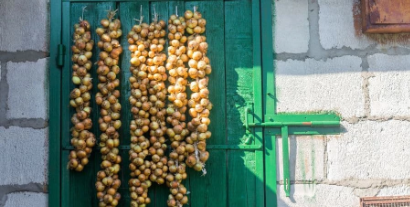Cultural Kaleidoscope: Dazzling New Year Traditions That Defy Expectations
Getty Images. (n.d.). Two champagne glasses clinking with sparklers in the background.
As the clock strikes midnight and the world collectively bids farewell to one year while welcoming the dawn of another, the celebration of New Year’s Eve takes on a myriad of forms across the globe. Beyond the familiar sight of fireworks and the inescapable clinking of champagne glasses, there exists a cultural kaleidoscope of dazzling traditions that defy expectations and offer a unique glimpse into the rich tapestry of global celebrations. Here are 5 New Year traditions around the world that we will uncover in this article.
1. Eating 12 Grapes at Midnight

iStock. (n.d.). 12 grapes in a bowl near champagne glasses on New Year’s
This is a New Year tradition in Spain, where people eat grapes at the stroke of midnight as it is believed to welcome luck and prosperity in the New Year. It is known as Las doce uvas de la suerte or the twelve grapes of luck, and those 12 grapes represent the 12 months in a year. There are many versions explaining this New Year tradition’s origin, including one which states that in 1909, winemakers, also known as vintners in the city of Alicante initiated the superstition as a means of disposing excess quantities of specific grape varieties. Nevertheless, the practice has origins dating back to the 1880s, evolving from the French custom of consuming grapes and champagne during New Year’s Eve, a trend adopted by the Madrid bourgeoisie. Over time, individuals from the lower socioeconomic class began partaking in grape consumption as a means of mocking the bourgeoisie as well as meeting up in public squares like the Puerta del Sol.
2. Ringing a Bell
Pixta. (n.d.). A bell at a temple in Japan
Joya-no-Kane signifies the yearly bell-ringing ceremony that takes place on New Year’s Eve at temples across Japan. Essentially, “joya” is a Japanese term for New Year’s Eve and “kane” represents the concept of a bell. Following an age-old tradition, the bell is usually chimed 107 times on December 31, with an additional ring as the clock reaches midnight on New Year, completing a total of 108 tolls that symbolize the 108 worldly desires in accordance with Buddhist teachings. This ritual, rooted in ancient wisdom, suggests that upon the 108th toll, individuals are thought to be freed from the burdens and concerns of the previous year, signifying a cleansing and renewal process.
3. Smashing Plates and Jumping Off of Chairs

Getty Images. (n.d.). Smashed plates are a Danish tradition
In Denmark, a widely embraced New Year’s custom revolves around breaking plates and discarded dishes. Locals gather their unused dinnerware, playfully shattering them against the doors of their loved ones as a symbolic gesture to ward off negative energies. Additional traditions encompass jumping off of chairs at the stroke of midnight to “leap” in the new year and indulging in Kransekage, a wreath-shaped cake crafted from stacked marzipan rings, adorned with ornaments and flags, and featuring a bottle of wine at its center.
4. Dressing in White

Little Birdies. (n.d.). Brazilian New Year’s traditions of leaping over seven waves
In Brazil, the commencement of the summer holidays is marked by the New Year (Ano Novo), extending until Carnival. Traditionally, Brazilians partake in a generous feast with family or friends, indulge in champagne, witness fireworks, and consume grapes, rice, or lentils, believed to attract good fortune. Wearing white attire is customary, a symbol of peace and prosperity, inclusive of those celebrating at the beach. Additional traditions involve leaping over seven waves, making a wish with each wave, and in Rio de Janeiro, people toss white flowers and other offerings into the sea for the sea goddess, Lemanjá, with hopes that she will fulfill their desires.
5. Hanging Onion
Travel Department. (n.d.). Hanging onions as part of a New Year’s tradition in Greece
In Greek culture, it is crucial to hang an onion at home as part of a New Year’s tradition. Typically, families attend the New Year’s Day church service, and afterward, they acquire an onion to bring home. The significance lies in waiting until after the service to perform this ritual. The tradition dates back to ancient Greece, where onions symbolize growth and rebirth due to their perceived fertility. Onions, known for their tendency to sprout even when left unused, are considered representative of good health, fertility, and longevity. The act of hanging an onion inside the house is believed to ensure blessings and luck for the upcoming year, making it one of the many rituals aimed at ushering in prosperity and well-being.
References:
Rickman, C. (2012, December 29). 12 grapes at midnight: Spain’s unique New Year’s Eve tradition. Food Republic. https://www.foodrepublic.com/1296466/12-grapes-at-midnight/
The Greek Herald. (2020, December 31). 6 New Year’s traditions from cultures around the world. The Greek Herald. https://greekherald.com.au/lifestyle/6-new-years-traditions-from-cultures-around-worl/
Funk, C. (2016, December 31). New Year’s Eve traditions around the world. Bookboon. https://bookboon.com/blog/new-years-eve-traditions-around-the-world/
Greek Boston. (2016, November 1). The Greek New Year’s tradition of hanging onions on doors. Greek Boston. https://www.greekboston.com/new-year/hang-onions/




